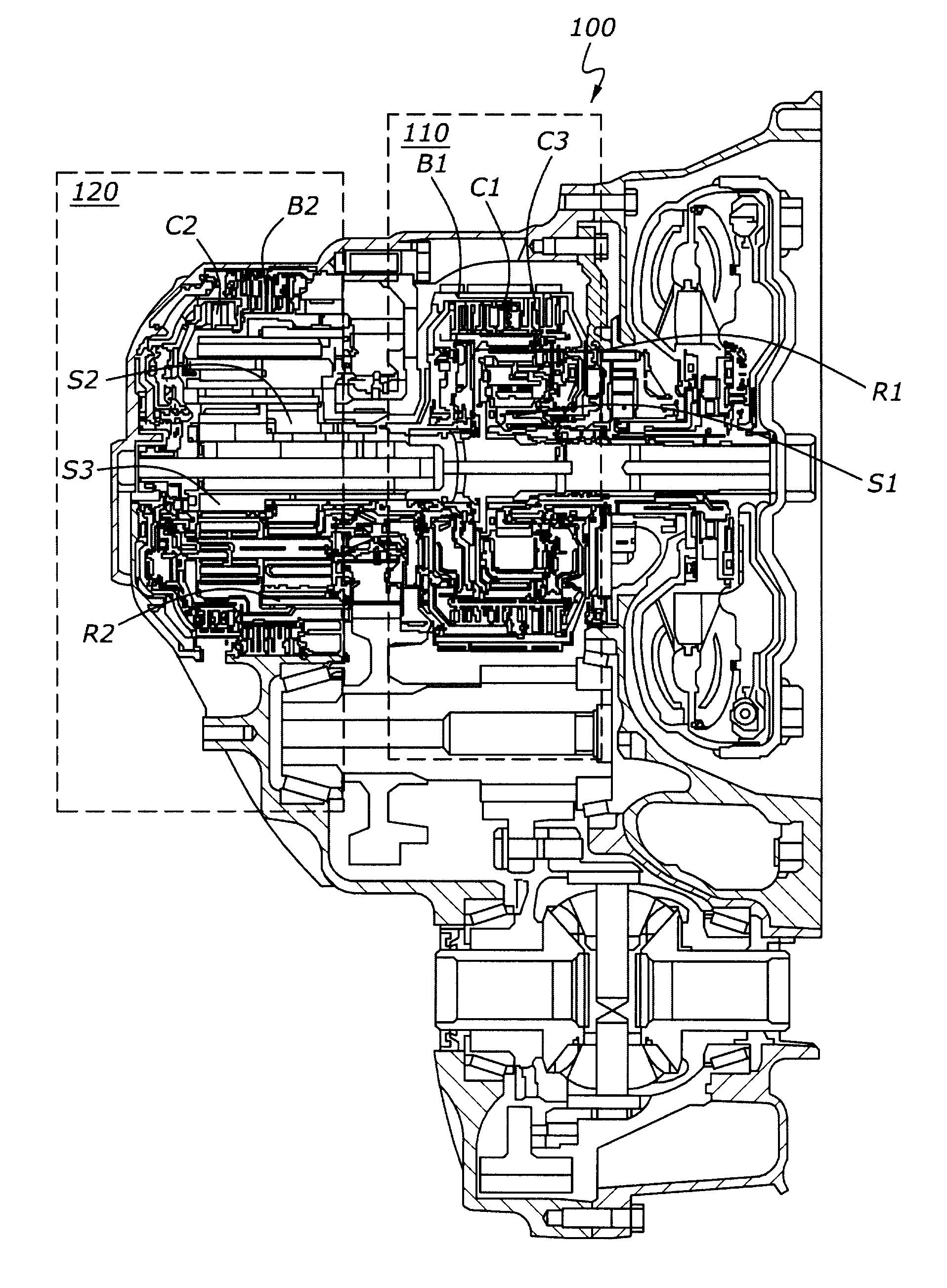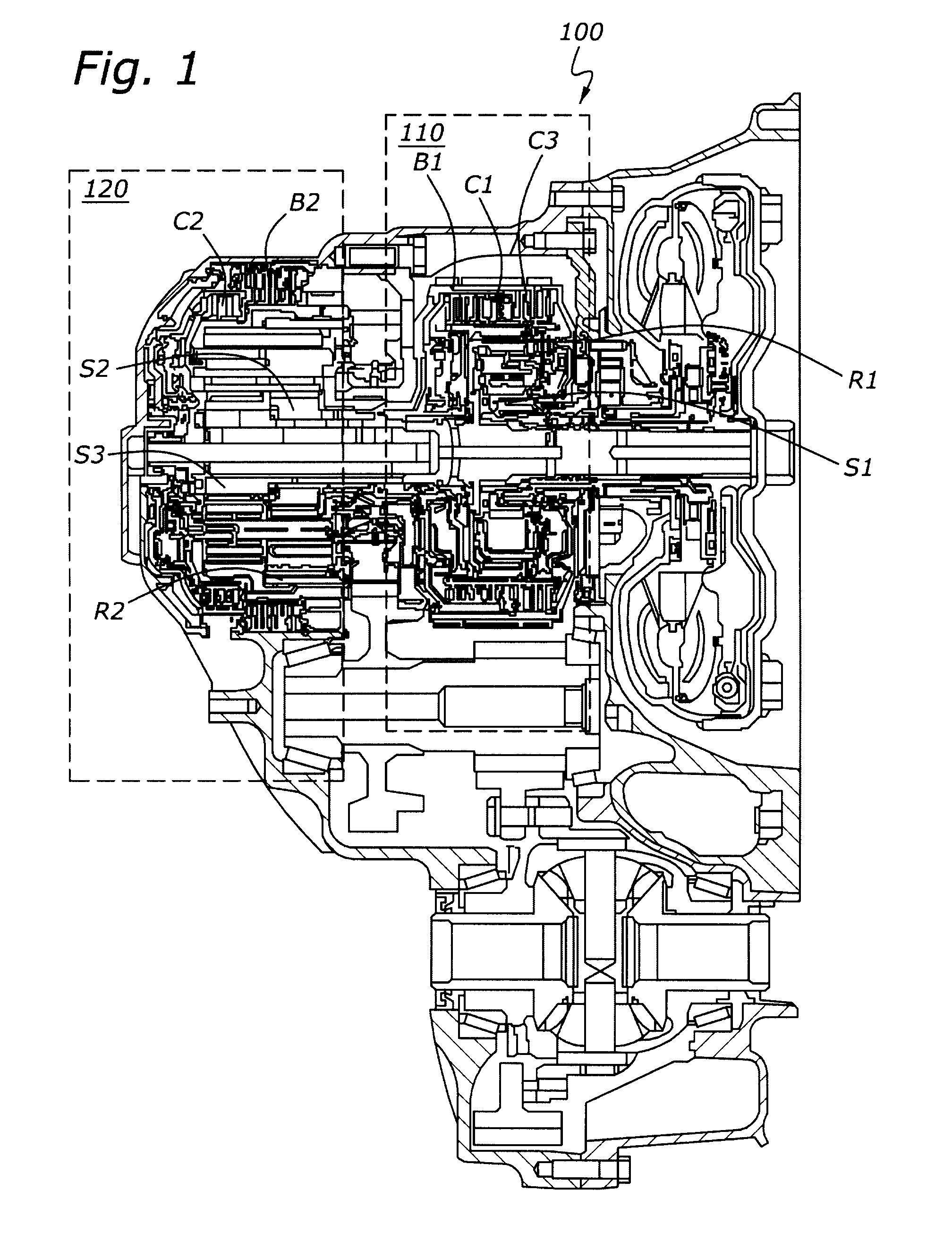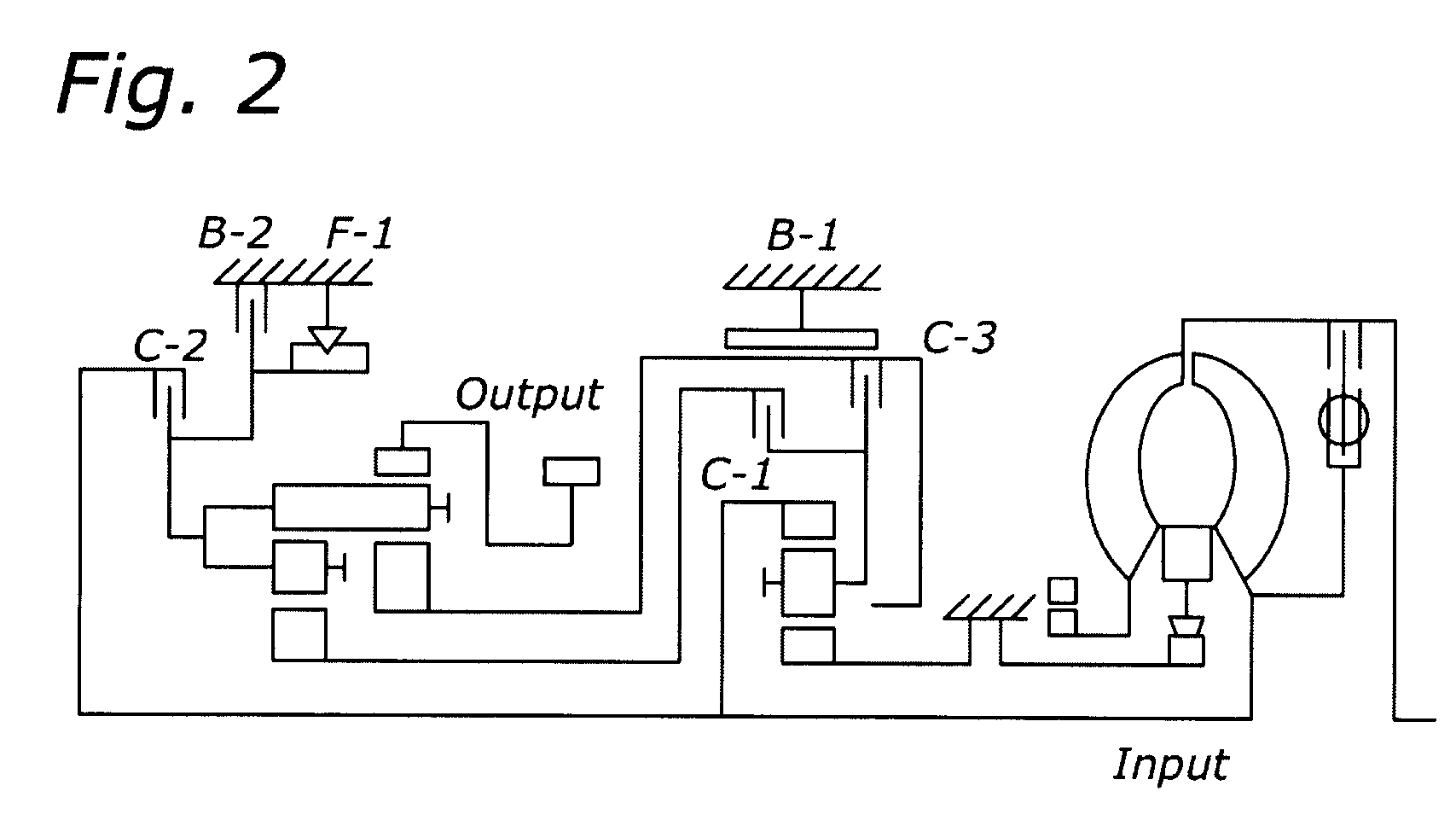Method and device for controlling an automatic transmission
a technology of automatic transmission and control device, which is applied in the direction of gearing control, gearing elements, gearing, etc., can solve the problems of high noise level and vibration transmission into the vehicle interior, further reducing the output torque, and still generating intrusive idle vibrations, etc., to achieve low input torque, facilitate rotation, and facilitate the effect of starting and stopping
- Summary
- Abstract
- Description
- Claims
- Application Information
AI Technical Summary
Benefits of technology
Problems solved by technology
Method used
Image
Examples
Embodiment Construction
[0024]The inventive method and device for controlling an automatic transmission are embodied in a six-speed automatic transmission 100, represented schematically in FIGS. 1 and 2, which combines a single-stage planetary gear train 110 with a two-stage planetary gear train or a Ravigneaux train 120. This known construction is also referred to as a “Le Pelletier” type. FIG. 1 here shows a cross sectional view of the structure of the transmission and FIG. 2 shows a schematic representation of the gear train.
[0025]In the structure according to FIG. 1 the single-stage planetary gear train 110 serves as speed-reduction or step-down transmission and has a sun gear S1, a ring gear R1, planetary gears and a planet carrier. The sun gear S1 is permanently fixed. The ring gear R1 is connected to the turbine shaft.
[0026]The two-stage planetary gear train 120 or the Ravigneaux train has a rear, (small) sun gear S3, a front (large) sun gear S2, a ring gear R3, short planetary gears, long planetary...
PUM
 Login to View More
Login to View More Abstract
Description
Claims
Application Information
 Login to View More
Login to View More - R&D
- Intellectual Property
- Life Sciences
- Materials
- Tech Scout
- Unparalleled Data Quality
- Higher Quality Content
- 60% Fewer Hallucinations
Browse by: Latest US Patents, China's latest patents, Technical Efficacy Thesaurus, Application Domain, Technology Topic, Popular Technical Reports.
© 2025 PatSnap. All rights reserved.Legal|Privacy policy|Modern Slavery Act Transparency Statement|Sitemap|About US| Contact US: help@patsnap.com



